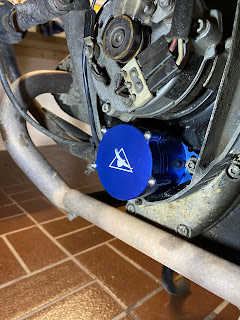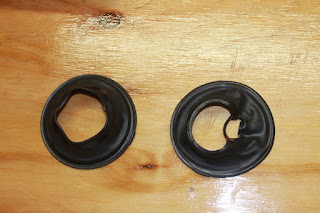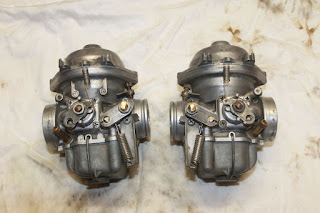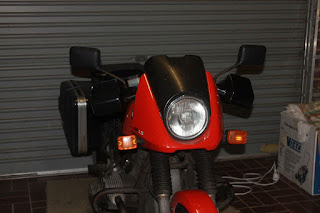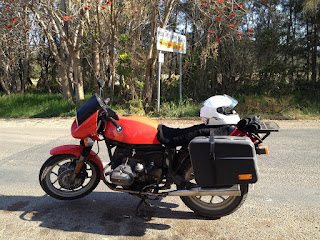I had no intention of purchasing a third R65LS, but one came up in Tasmania that was of low km and which looked really sweet, so I considered purchasing it.
My friends encouraged this. There is an agreement that when I have all three in roadworthy condition we will take them riding together.
When I got the second LS I had really clear reasons to do so: redundancy (even if I sent the heads away for work I'd have a bike to ride) and diagnosis (keep swapping components until a problem was fixed).
The new LS was just beautiful. Well cared for, low km, good price. So, after a few weeks negotiating its transport from Tasmania to mainland Australia it arrived home.
I was aware that it had not been regularly ridden for years and that it would need a fair bit of work to get it properly roadworthy. There were more problems with it than I’d realised at the time of purchase, but nothing unexpected. The preliminary list is:
- Tyres. These are barely worn, but are dated 2012. When I do these I’ll replace the tubes and wheel bearings as well.
- Steering Head Bearings. These were notched. Once I’d removed the forks turning the head stem was gritty.
- Rebuild forks. Probably the oil in these is more than 30 years old.
- Replace rear shocks. These were original, ikon replacements are on order.
- Replace brake lines. These were stamped “09/82”. They weren’t leaking, but clearly overdue for replacement. I’ll also rebuild the callipers. The master cylinder had been replaced a year or so ago.
- Fix crash damage. I purchased the bike knowing that the engine protection bars had both been bent back, but didn’t realise that there was a lot of fibreglass repair inside the fairing. There may be other problems associated with this, such as bent forks.
- Fix oil leak from front engine cover. Probably the seal around the crankshaft (alternator rotor) has failed. However, if I’m going to pull all that apart I may as well do the camchain: the bike has done 55,000km, I would expect to do the camchain at 70,000km. The seals under the alternator and bean can will be replaced as part of this.
- Rebuild the carburettors. At the same time replace the fuel hose and air filter. Oddly, the bike has been tuned without slack or free play in the throttle cables, it’s surprising that it was running so evenly. The bike is performing sluggishly, hopefully cleaning the carburettors will fix this.
- Service the speedo. The odometer works intermittently, which casts some doubt on the 55,000 distance travelled. But, clearly, it’s not gone more than a couple of hundred km since the tyres were replaced in 2012.
- Install LED indicator bulbs.
- Normal service. Oils, filters etc.











